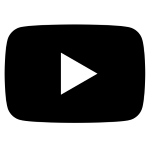
Mental Health
November 12, 2025
In every story, there’s a protagonist and an antagonist.
If your life is the story, who’s the villain?
For many of us today, it’s not a person, not a disease, not even time. It’s technology. More specifically, the smartphone, that glowing rectangle that steals your attention, fragments your mind, and drains your prana (vital energy).
The Energy Drain You Don’t See
Modern neuroscience now confirms what Indian Knowledge Systems (IKS) have long taught. Where attention goes, energy flows.
Each notification, each scroll, each dopamine spike consumes neural energy, leaving us mentally depleted. A 2023 study in the Journal of Behavioral Addictions found that excessive smartphone use correlates with higher anxiety, disrupted sleep, and reduced cognitive control (Paterna et al., 2024).
In yogic psychology, this is described as “chitta vikshepa” - the scattering of the mind that obstructs focus and clarity (Patanjali Yoga Sutra, 1.30–1.32).
The cost is not just time lost, but energy misdirected. The energy that could nurture your relationships, build you meaningful skills, or deepen your identity of yourself.
The Bhagavad Gita (6.26) (Swami, 2025) clearly states:
“From wherever the mind wanders, due to its restless nature, one must bring it back under the control of the Self.”
Our devices amplify this restlessness, hijacking attention with infinite stimuli.
Ancient Indian systems like Yoga and Ayurveda viewed health as a state of energy equilibrium. A harmony between the body (annamaya kosha), mind (manomaya kosha), and consciousness (jnanamaya kosha) as detailed in the Taittiriya Upanishad (2.1).
When our attention is chronically fragmented, these layers of being fall out of balance.
Reinvest Your Energy
To reclaim your vitality, you must do more than “unplug.” You must reinvest your energy consciously, in areas that align with your deepest human values.
- Family : Real connection restores emotional energy. Psychosocial studies show that quality relationships act as a buffer against anxiety and burnout (Holt-Lunstad, Smith and Layton, 2010). Listen without distraction. Spend time and create memories. You cannot predict tomorrow.
- Education : Learn collectively and purposefully. The Upanishads describe vidya (true knowledge) as that which leads to liberation, not distraction. Study subjects that have always intrigued you. Build skills that you always wanted to - dance, music, art? Through discipline, focus and precision. Endless consumption steals your intellect.
- Meditation and Yog : Stillness is the antidote to overstimulation. Studies on the Yoga of Immortals protocol demonstrate measurable reductions in stress, anxiety, and depression, and improvements in emotional regulation and sleep quality (Verma et al., 2021).
- Health : The body is your vessel for energy. According to Charaka Samhita, vitality (ojas) is preserved through moderation, mindful breathing, and self-discipline. Even short daily YOI sessions have been shown to enhance physical and emotional wellbeing.
- Work : Engage in karma yoga. Work aligned with purpose. The Bhagavad Gita (2.47) reminds that fulfillment lies not in control over outcomes, but in the clarity and integrity of our actions.
How to Control Screen Time (Without Losing Your Mind)
Controlling screen time is not about withdrawal but regaining mastery over attention.
Here’s how to apply both scientific strategies and yogic discipline to balance your digital use:
- Set Conscious Intervals: Neuroscience shows that frequent task-switching drains mental energy. Use a “Digital Sunrise” rule. No screens for the first hour after waking and the last hour before sleep. These times are sacred for self-regulation in both Ayurveda and circadian rhythm science.
- Create “Pratyahara” Moments: In Yoga, pratyahara means withdrawal of the senses. Not deprivation, but control. Schedule short digital fasts daily: 15 minutes of meditation, only breath awareness.
- Use Technology Intentionally: Before opening an app, pause and ask: What am I here to do? This moment of mindfulness breaks impulsive use and re-engages the prefrontal cortex, the brain’s control center.
- Track and Reflect: Screen-time apps are mirrors, not punishments. Observe your patterns without guilt. Reflection is the first step toward behavioral change.
- Replace Over Remove: Replace scrolling time with rejuvenating practices. Walk in nature, breathe, stretch, or practice YOI. Nature and mindful movement restore dopamine balance and reset attention networks.
As Patanjali said, mastery comes through “abhyasa” (consistent practice) and “vairagya” (non-attachment). Your attention is the modern form of tapas — disciplined energy that fuels growth.
Technology is not the enemy. Its unconscious use is.
As a mental health researcher, I’ve seen the toll of digital fatigue, emotional disconnection, and burnout. But I’ve also witnessed how evidence-based yogic principles of awareness, breath, and visualization transform exhaustion into clarity.
Your energy is your greatest currency. Spend it where it multiplies.
What will you do today to reclaim your energy from your devices?
References
Bhagavad Gita, 2.47, 6.26. Swami, B. (2025). Bhagavad-gītā As It Is 2.47. [online] Vedabase.io. Available at: https://vedabase.io/en/library/bg/2/47/.
Charaka Samhita, Sutrasthana 17.74. Researchgate.net (2017) Charaka Samhita Sutrasthana 17.74. [online] Available at: https://www.researchgate.net/publication/339290043_Charaka_samhita_vol_I_Sutra_Sthana
Holt-Lunstad, J., Smith, T.B. and Layton, J.B. (2010). Social Relationships and Mortality Risk: a Meta-analytic Review. PLoS Medicine, [online] 7(7). doi:https://doi.org/10.1371/journal.pmed.1000316.
Patanjali Yoga Sutras, 1.30–1.32. Yogainternational.com. (2025). Yoga Sutra 1.30-1.32. [online] Available at: https://yogainternational.com/article/view/yoga-sutra-1-30-1-32-translation-and-commentary/?srsltid=AfmBOoqmLaXaq_tmidlD2G9Ravvwb2FJckDHNy9LfjxGq2b9swmt4N0U
Paterna, A., Alcaraz-Ibáñez, M., Aguilar-Parra, J.M., Salavera, C., Demetrovics, Z. and Griffiths, M.D. (2024). Problematic smartphone use and academic achievement: A systematic review and meta-analysis. Journal of Behavioral Addictions, [online] -1(aop). doi:https://doi.org/10.1556/2006.2024.00014.
Taittiriya Upanishad, 2.1. Upanishads.org.in. (2025). Upanishads. [online] Available at: https://upanishads.org.in/upanishads/7/2/1/1
Verma, S., Donovan, J., Tunuguntla, H.S., Tunuguntla, R., Gupta, B.V., Nandi, A. and Shivanand, I. (2021). Yoga of Immortals Intervention Reduces Symptoms of Depression, Insomnia and Anxiety. Frontiers in Psychiatry, 12. doi:https://doi.org/10.3389/fpsyt.2021.648029.





